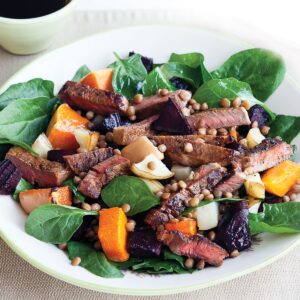
The commercial export of kiwifruit grown in the Te Puke area began in 1953, with the first shipments London-bound. Today, these same kiwifruit vines still bear fruit and contribute to about 100 million trays of the fruit exported from New Zealand to more than 60 countries. Ninety per cent of exported kiwifruit is grown in the Te Puke area. The fuzzy-skinned kiwifruit with bright green flesh is commonly the Hayward variety, while the smooth-skinned gold kiwifruit with golden yellow flesh is marketed worldwide as Zespri® Gold.
Buying
Choose unblemished, shrivel-free kiwifruit that yield slightly to pressure – this ensures the fruits’ sweetness. For still hard kiwifruit, speed up the ripening process by storing the fruit with ethylene-producing produce such as apples or bananas.
Storing
Keep kiwifruit in the fridge. The fruit can last for up to two months – provided it is stored away from ethylene-emitting produce.
Nutrition
Kiwifruit are one of the few green fruits and are nutritional winners. They are high in vitamin C, have good levels of vitamin E, fibre (both soluble and insoluble) magnesium and potassium. They contain lutein and zeaxanthin, phytochemicals, which have been shown to help protect against some cancers and age-related macular degeneration of the eye.
Using
Strawberries and kiwifruit have complementary flavours that work well together in fruit salads – and as pavlova toppings. Use the mashed flesh of ripe kiwifruit in a similar way to mashed bananas to give a fruity sweet flavour to loaves or muffins. Or for a fruit salsa to accompany chicken or fish, mix together kiwifruit, orange and pineapple. The enzymes in kiwifruit can also tenderise meat: pack kiwifruit slices on top of meat and leave for 10 minutes then remove all traces of the fruit and cook the meat promptly. Kiwifruit are great to include as part of your week menu.
Did you know? Italy is the world’s largest kiwifruit producer.
www.healthyfood.com










